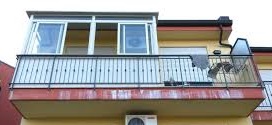
Transform a balcony on the veranda: what building title is necessary?
Transform a balcony on the veranda: what building title is necessary?
May 16, 2019 / by Mario Guerriero
Tar Campania: the closure of a balcony for the construction of a veranda creates new volume and therefore needs the building permit; it is neither relevance nor technical volume
With sentence no. 2318/2019 of the Campania Tar is faced with the age-old problem of how a balcony on the veranda can be transformed.
The facts in brief
Following investigations carried out by the traffic wardens at an apartment on the first floor of a building, it was found that a balcony with an anodized aluminum and glass veranda was closed, 1.75 meters by 1.05.
Once the absence of the necessary qualifications has been ascertained, the demolition of the veranda and the restoration of the state of the places are ordered with a management provision of the Municipality of 2015.
The owners have challenged the provision before the Regional Administrative Court as it would be: “maintenance and appurtenant works of modest relevance and as such subject to DIA”.
The decision of the TAR
According to the judges:
the intervention is a real restructuring, which required the building permit. In this sense, on the qualifying level, the creation of a new volume, an incident also from the point of view of the alteration of the elevations and the shape of the building, assume
For the TAR, the creation of a veranda therefore represents an intervention of urban transformation and building of the territory with an increase in surfaces and volumes and as such is subject to building permit pursuant to art. 10, of presidential decree n. 380/2011.
In fact according to the jurisprudence:
building interventions that determine a volumetric and architectural plot variation of the building in which they are built, such as verandas built on the balcony of an apartment, are subject to the prior release of the building permit.
The judges of Campania also recall a previous ruling by Tar (sentence Tar n. 259/2015), according to which:
in construction, a veranda is to be considered, in a technical legal sense, a new room that can be used autonomously and is normally lacking in a precarious character, since it is a work destined not to meet temporary and contingent needs with its subsequent removal, but to last in time, thus expanding the enjoyment of the property.
In particular, according to the ruling the closure of a veranda, regardless:
- the nature of the materials used;
- of modest size;
however, it constitutes a volumetric increase and a change in the prospectus / shape of the building.
Therefore it is correct the determination of the administration, according to which the works are placed in incurable contrast with the PRG, which allows for that specific area exclusively the preservation of the pre-existing volumes, with prohibition of the realization of new volumes.
The appurtenant character and the verandas
According to the judges, the artifact under consideration cannot be considered pertinent to urban planning purposes.
Relying on established jurisprudence, it is necessary to distinguish:
the concept of relevance provided for by civil law from the narrower concept of relevance in the urban sense, which does not apply in relation to those buildings which, although they can be qualified as appurtenant property according to private law, nevertheless assume an autonomous function with respect to other construction , resulting in their being subject to the building permit regime.
In the building sector, only buildings without an autonomous destination qualify as appliances, which exhaust their intended use in the functional relationship with the main building, so as not to affect the urban load.
The ruling also excludes that verandas can be considered as “technical volumes” because they lack functional autonomy and are not intended to house plants.
GECOSEI of Giuseppina Napolitano


